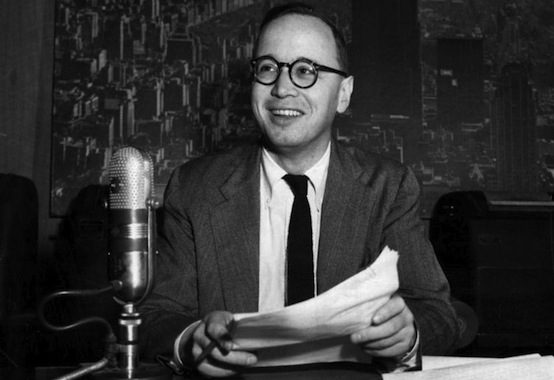Dressing the Part of an American Conservative

My love of old things extends beyond the spheres of politics and high culture. As some readers and contributors to this site are aware, it also leads me to dress as if I were competing in an Arthur Schlesinger, Jr., lookalike contest.
I remember one day in graduate school when I proudly turned up for a lecture in my latest acquisition from the Andover Shop in Cambridge: a jacket in beautiful lovat tweed with soft shoulders, a topstitch, and gently-angled hacking pockets. I wore this magnificent garment with an oxford cloth button-down shirt, bowtie, soft flannel trousers, and cordovan loafers. “You look like you’re planning the Vietnam War,” said an awestruck classmate. Politics aside, I took it as a compliment.
That iconic combination of tweed, oxford cloth, flannel, and good leather (the bowtie is optional) used to be known as the Ivy League Look. At his internet lair, fittingly called Ivy Style, the menswear writer Christian Chensvold has just completed a comprehensive of the Look’s rise, fall, and recent revival as fashion kitsch. An excerpt dealing with the Look’s eclipse in the late ’60s:
Although the broader culture was changing rapidly and the hippie movement was spreading, the new open admissions standards at elite universities was changing the student body. Style-setting schools such as Princeton and Yale were no longer populated predominantly by kids who had gone to prep school, where they were forced to wear a jacket and tie every day and maintain a neat haircut. Schools were also dropping their jacket-and-tie dining hall dress codes. It’s impossible to underestimate the pace of social change in the late ’60s; the Ivy League Look, in its original guise, was slated for extinction, and the name attached to it during its popular silver age would fall into almost immediate archaism.
The interest of the piece isn’t limited to dandys and nostalgists. Really, it’s an essay in social history that explores the fate of a particular vision of American power and success. The taste for tracing the spirit of an age in its clothes isn’t universal. But if you’ve ever admired the roll of an unlined shirt collar or the loft of a true Shetland sweater, you should read the whole thing here.
Comments